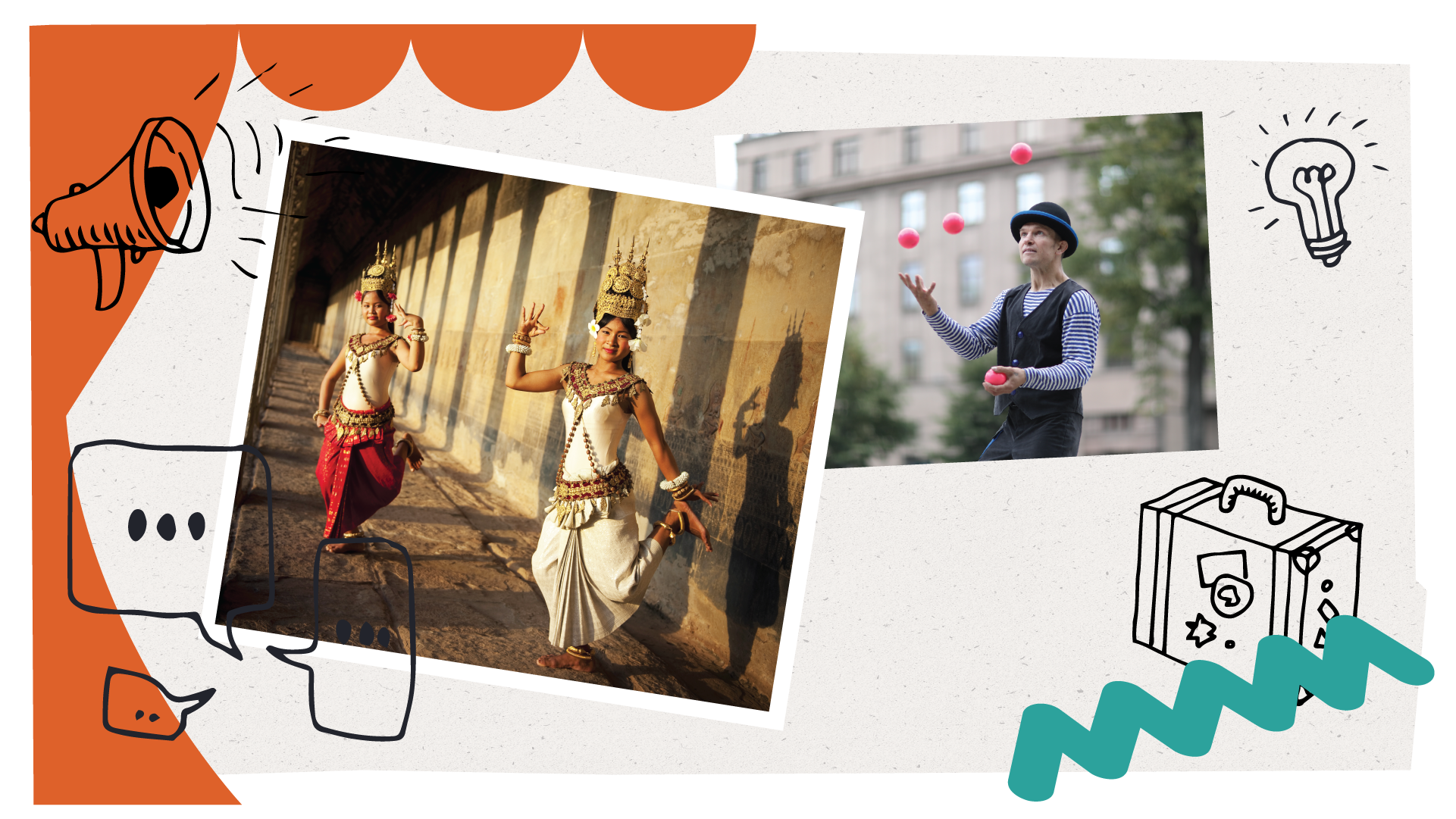Balancing Act
 Download PDF
Download PDFFrom a tightrope walker in Russia, to a trapeze artist in Las Vegas, to an acrobat in Cambodia, one skill that all circus performers need to master is balance. To dive into an exploration of balance around the world, show your class a video of a circus act and ask them to watch it through the lens of balance.
Afterwards, prompt them with questions like:
- How would you define balance?
- How do you think the performer stayed balanced?
- And What affects the difficulty of balancing? Why?
Use that discussion as a way to examine how physics creates balance, being sure to study gravity! With your class, examine how Newton’s laws play a role in something like tightrope walking.
Next, have your class try to apply these concepts in real life by getting on their feet! Tape a line or zigzag shape on the floor, and have students balance on the tape as if it’s a rope.
Make the activity more challenging by having students carry a book while walking, place a box on their head or carry a heavy backpack. You can also experiment with balance in the classroom by making towers out of blocks, books or popsicle sticks.
Once your class has experimented with these physics in real life, have each student look up a video of a circus feat, and then have them explain how it’s possible with their newfound scientific knowledge!
To support this unit, use the Derring-Do With the Greatest of Ease Activity.
